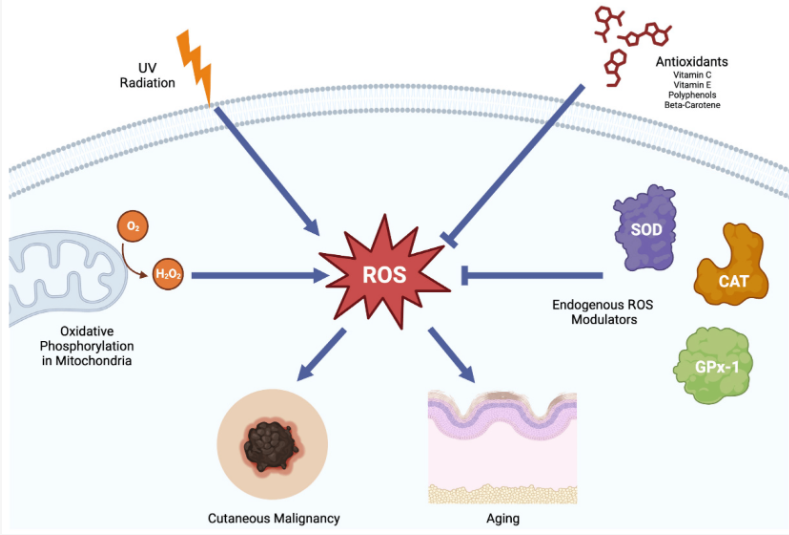At present, classic theories on the mechanism of skin aging include the theory of free radicals and oxidative stress, the theory of inflammatory aging, the theory of skin photoaging, and the theory of nonenzymatic glycosyl chemistry.
Free Radicals and Oxidative Stress Explained
Free radicals are harmful molecules that speed up the aging process in our bodies and skin.
What are Reactive Oxygen Species (ROS)? ROS are unstable oxygen-containing molecules that easily react with other molecules in our cells. When there's an imbalance between these ROS and our body's natural defenses (antioxidants), it leads to oxidative stress.
Why is this harmful?
- Too many ROS can damage our cell's powerhouses, called mitochondria, reducing their efficiency.
- This damage can lead to a chain reaction that speeds up aging.
- Excessive ROS can also harm our DNA, causing problems in cell function and replication.
Effects on Skin
- High levels of ROS speed up skin aging and reduce collagen, leading to sagging and wrinkles.
- An enzyme called matrix metallopeptidase (MMP) increases with ROS, breaking down collagen and damaging the skin's structure.
How to Fight Skin Aging? Reducing the amount of ROS in our skin cells is key to slowing down the aging process.
Niacinamide, also known as Vitamin B3, is a versatile skincare ingredient that offers multiple benefits for the skin, including reducing Reactive Oxygen Species (ROS) and oxidative stress.

